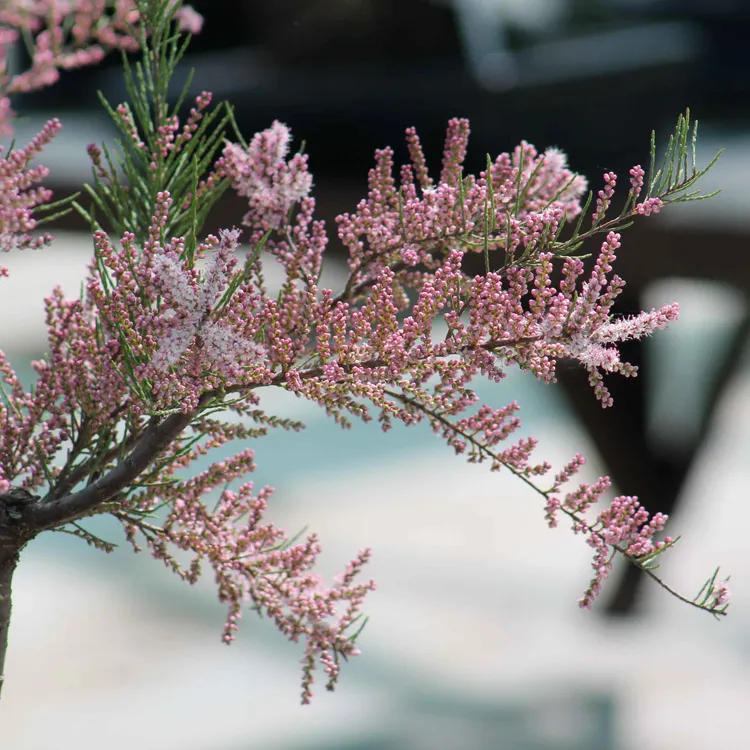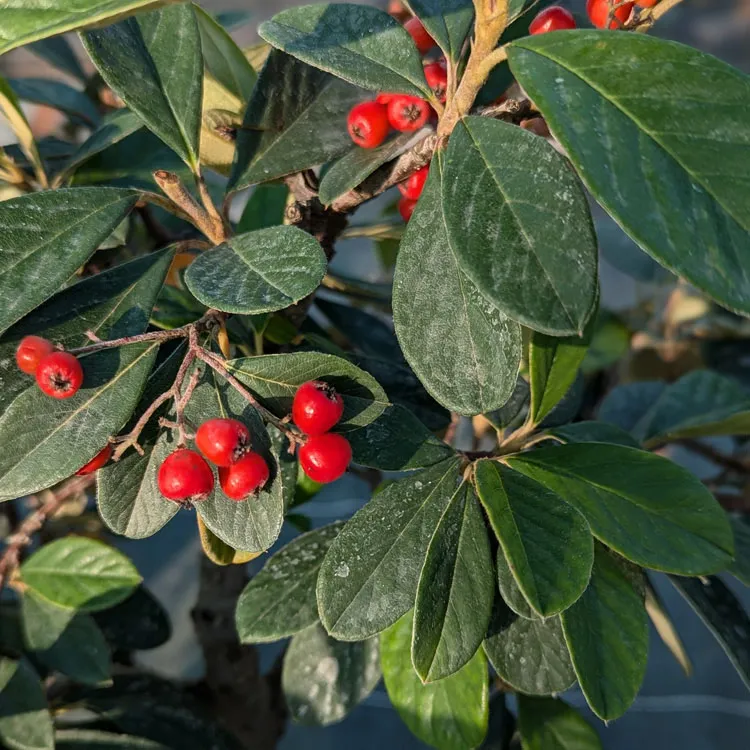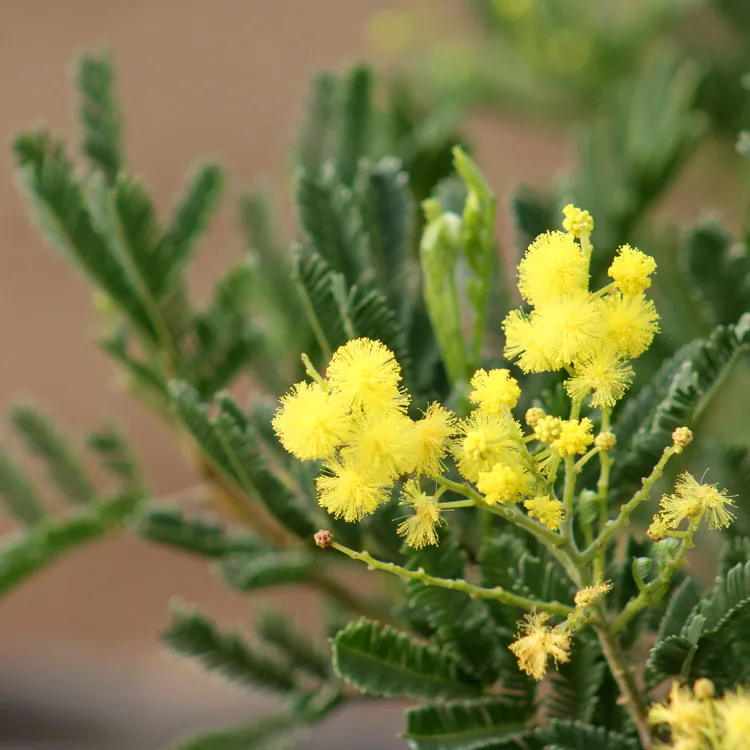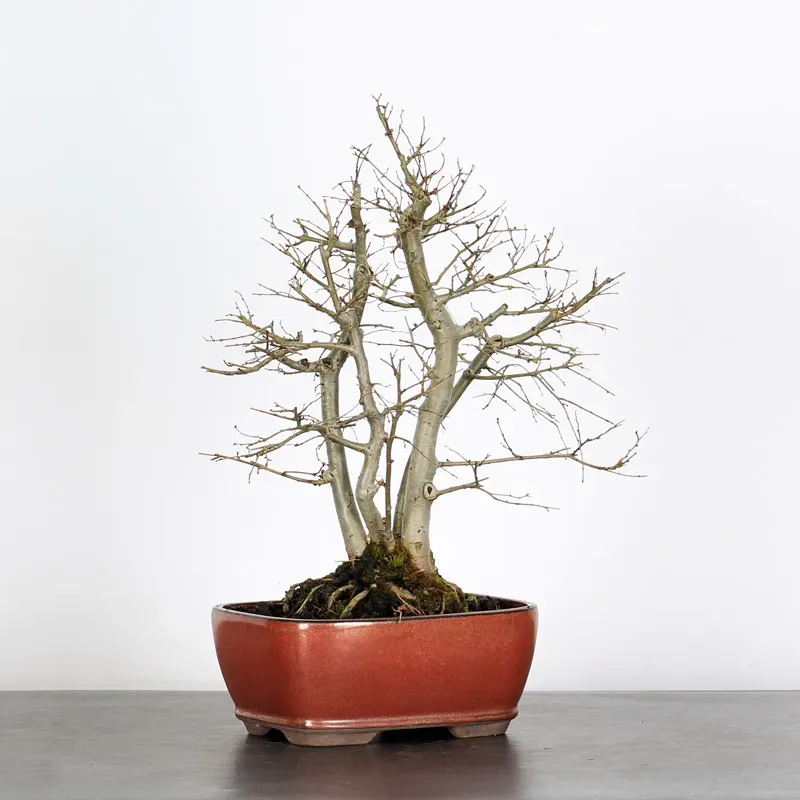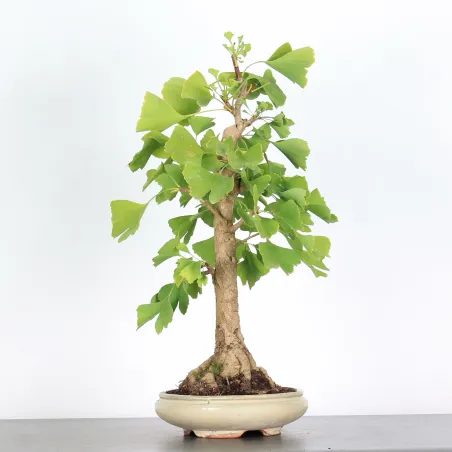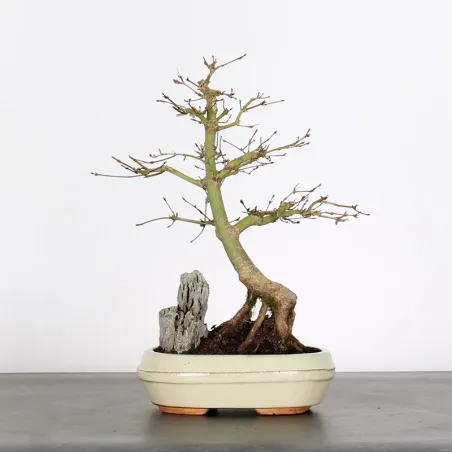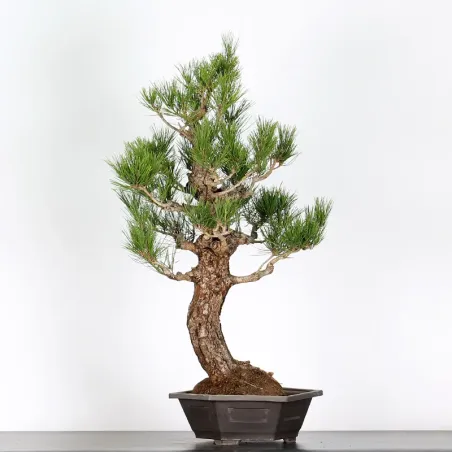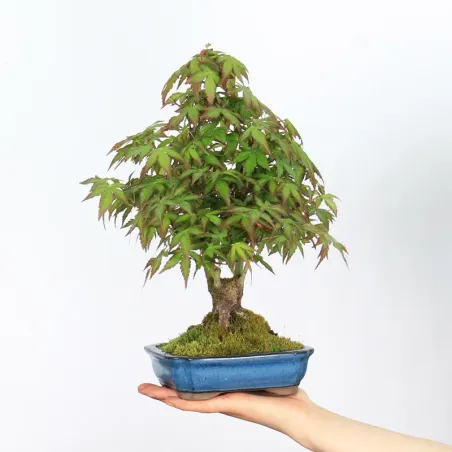A subtropical species, the Chinese elm adapts perfectly to our temperate climates. Accepting temperatures ranging from -5°C to +30°C, it should be grown outdoors in light. During the summer, however, the Chinese elm prefers a semi-shaded location especially when the sun becomes bright and scorching, the ideal would be to find it preferably in an eastern exposure, in order to give it the morning sun and protect it in the afternoon.
In winter, maple needs and will withstand the cold, especially keep it outside! As a precaution, you can protect the roots (the pot) when temperatures are below zero (especially during heavy frosts), for example by using a winter fleece, glass wool, etc.


 Production of French Bonsai
Production of French Bonsai











































